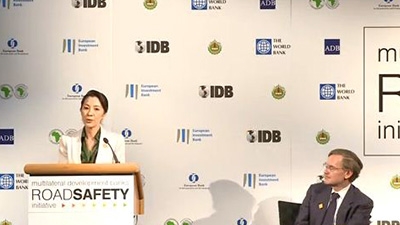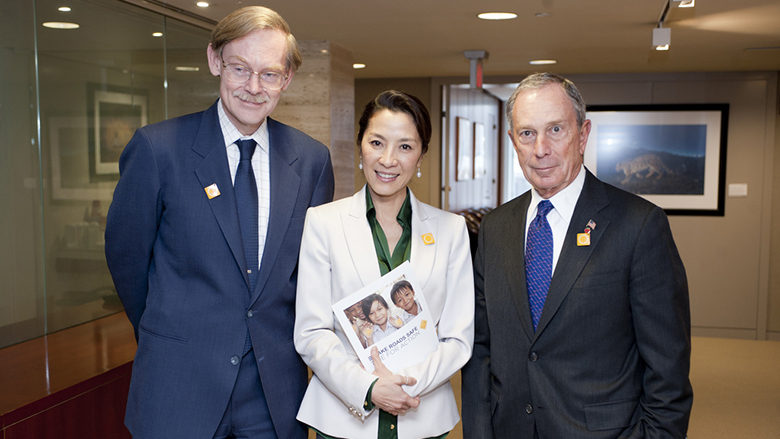Global Partnership
The Global Road Safety Facility (GRSF), which aims to generate increased funding and technical assistance for road safety activities in low- and middle-income countries, is the focal point for road safety at the World Bank.
The GRSF animates the Multilateral Development Bank (MDB) Road Safety Initiative, through which the World Bank and six other MDBs are collaborating to improve road safety and raise awareness of the Decade. The initiative calls for an integrated Safe System approach that promotes shared responsibility for ensuring safe mobility. Film actress Michelle Yeoh, New York City Mayor Michael Bloomberg, World Bank President Robert B. Zoellick, and Inter-American Development Bank Executive VP Julie Katzman held a special event to boost this initiative in April 2011 [read more].
Mainstreaming Road Safety in Bank Operations
Since its creation in 2005, the GRSF has helped the Bank move from a piecemeal approach to road safety to a more comprehensive, Safe System approach in its operations. This approach brings together all concerned sectors, in particular transport and health, to establish a strong policy and results framework leading to improved sustainability on the ground.
For instance, in Europe and Central Asia (ECA), the GRSF has sponsored road safety capacity reviews in many countries and the Bank is now supporting not only nationwide projects but also road safety corridors that incorporate institutional strengthening, for instance in Azerbaijan, Georgia, and Kazakhstan.
“When we started working on road safety we only focused on remediation for black spots, but now the corridor approach is having more impact,” explained Henry Kerali, the Bank’s Transport Sector Manager for ECA. “Regional awareness has improved and speed patrols, policing, and safety audits in road design are all well advanced. The Safe System approach is a priority in all road infrastructure projects for the foreseeable future.”
In Latin America and the Caribbean (LCR), the Argentina Road Safety Project, which benefits from a $30 million IBRD loan, is considered a model of the Safe System approach. The program aims to reduce road traffic injuries and fatalities by strengthening the country’s institutional framework and management capacity for road safety. The GRSF funded the initial capacity review for this program.
“The Argentina road safety project benefited from high-level political support and has already led to a substantial reduction in road crashes,” said Aurelio Menendez, the Bank’s Transport Sector Manager for LCR. “It offers a model that other countries can learn from and adapt to their specific institutional and transport sector context.”
The Bank, the GRSF, and other partners are also supporting regional road safety initiatives. These include the 2nd African Road Safety Conference in Addis Ababa in November 2011, which led to the endorsement of the elaboration of a Road Safety Charter for Africa by African transport ministers. Another example is the creation of a road safety observatory for Latin American countries, based in Buenos Aires, which will help improve data collection and information on road traffic crashes.
The Bank also has a road safety policy for its staff which aims to assist them in mitigating road safety risks faced in the course of their work.



